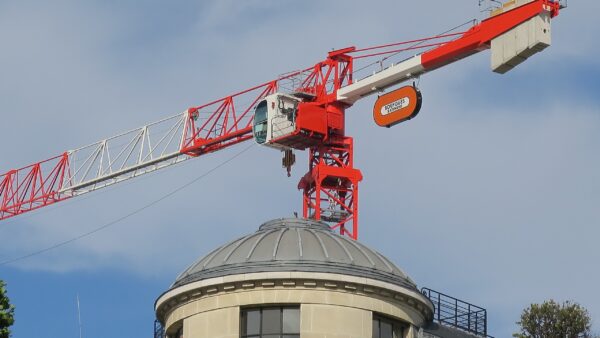A team from the University of Colorado Boulder has engineered a new material that can cool structures without using energy.
The material, which is applied as a film, works by “passive radiative cooling”, meaning that objects coated in it “naturally shed heat in the form of infrared radiation”.
Just 10 to 20 square metres of this material on the rooftop could nicely cool down a single-family house in summe– Gang Tan, paper co-author
The material, described in the journal Science, is scalable and could be used on solar panels and large structures such power plants which use large amounts of water to take away heat.
It is manufactured as a 50 micron “glass-polymer hybrid”, only slightly thicker than aluminum foil. Xiaobo Yin, co-director of the research, said “We feel that this low-cost process will be transformative for real-world applications.”
Gang Tan, a co-author of the paper, said: “Just 10 to 20 square metres of this material on the rooftop could nicely cool down a single-family house in summer.
“Just by applying this material to the surface of a solar panel, we can cool the panel and recover an additional one to two percent of solar efficiency.”
Ronggui Yang, also a professor of mechanical engineering said: “The key advantage of this technology is that it works 24/7 with no electricity or water usage.
“We’re excited about the opportunity to explore potential uses in the power industry, aerospace, agriculture and more.”
The invention was funded by a $3m grant awarded to Yang, Yin and Tan in 2015.
Image courtesy of the University of Colorado Boulder
Comments
Comments are closed.











Does this technology work in the other direction to draw heat onto the surface to warm it? E.g./ if it was ‘flipped’ would the item it is applied to experience heat radiated to it?
What a ‘cool’ engineering solution, simple and seemingly low cost to keep the heat out in summer, thus saving a lot to keep it cool.
There is no mention of just how it would be securely fixed onto a whole variety of external surfaces. The proof of its worth lies in it’s practical application in a wide and varied range of applications and
actual temperature lowering measurements!
Interesting concept; as with other such ideas much depends upon the opportunity to provide an enduring bond to substrates such as glass (without adversely affecting the radiant transmission) and its durability against UV degradation and erosion from wind, rain, dust and atmospheric pollutants.